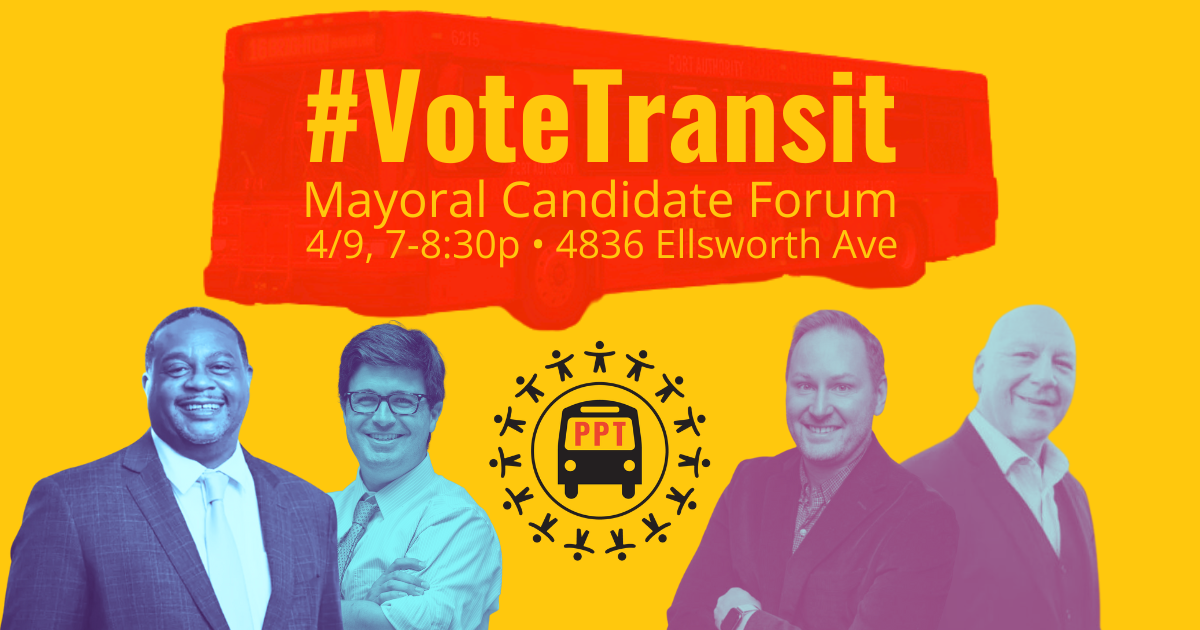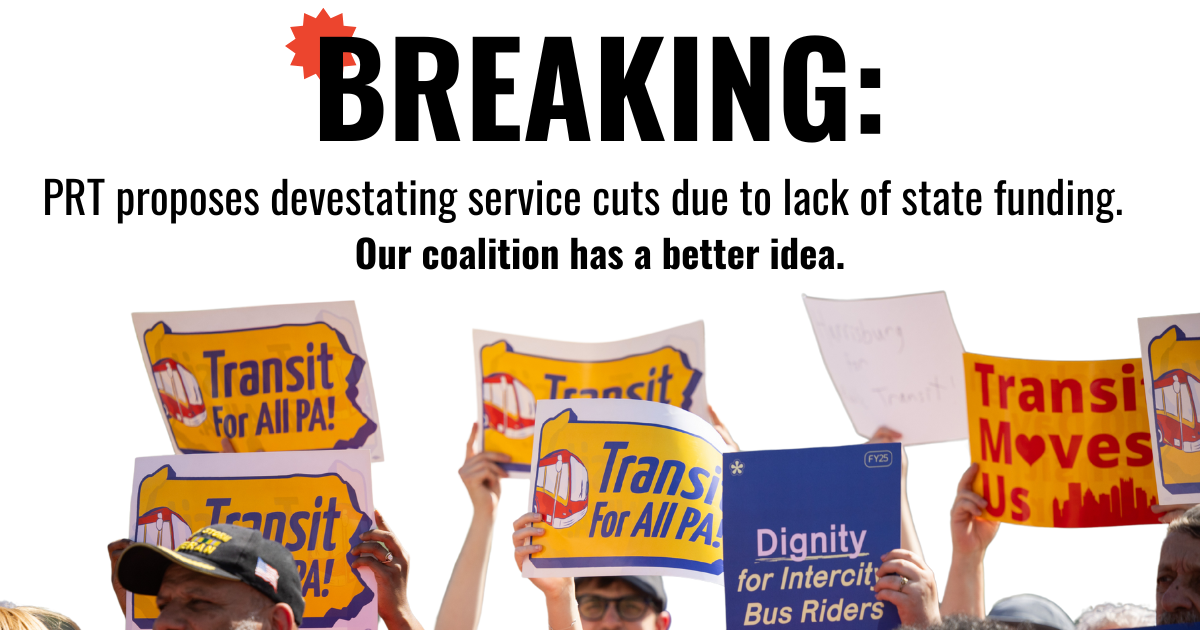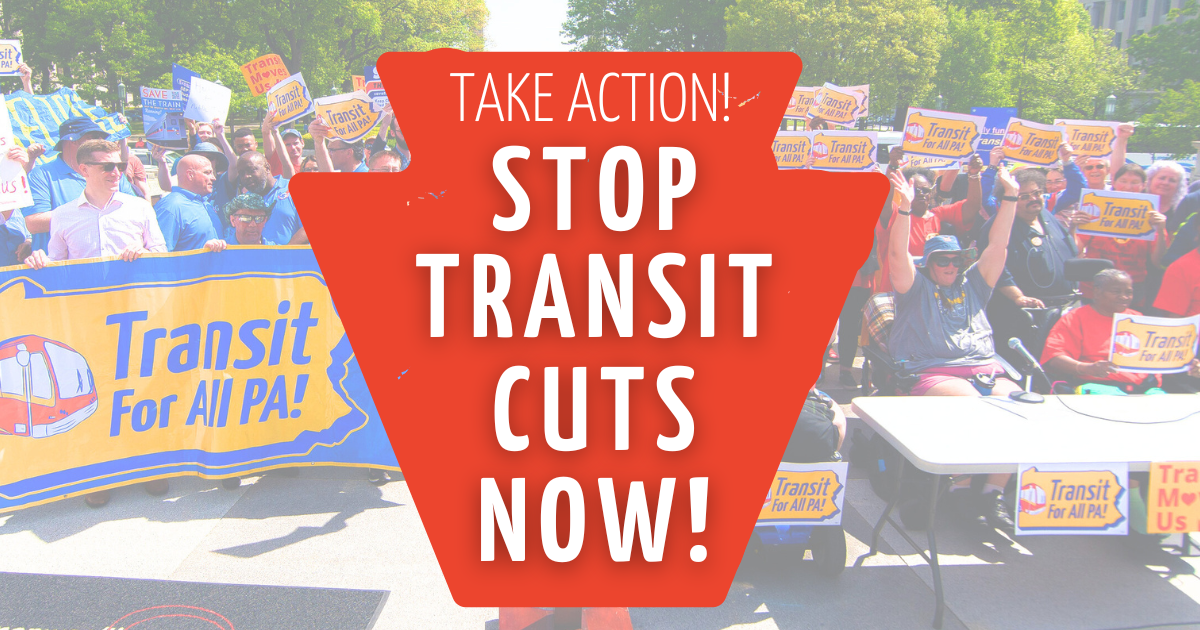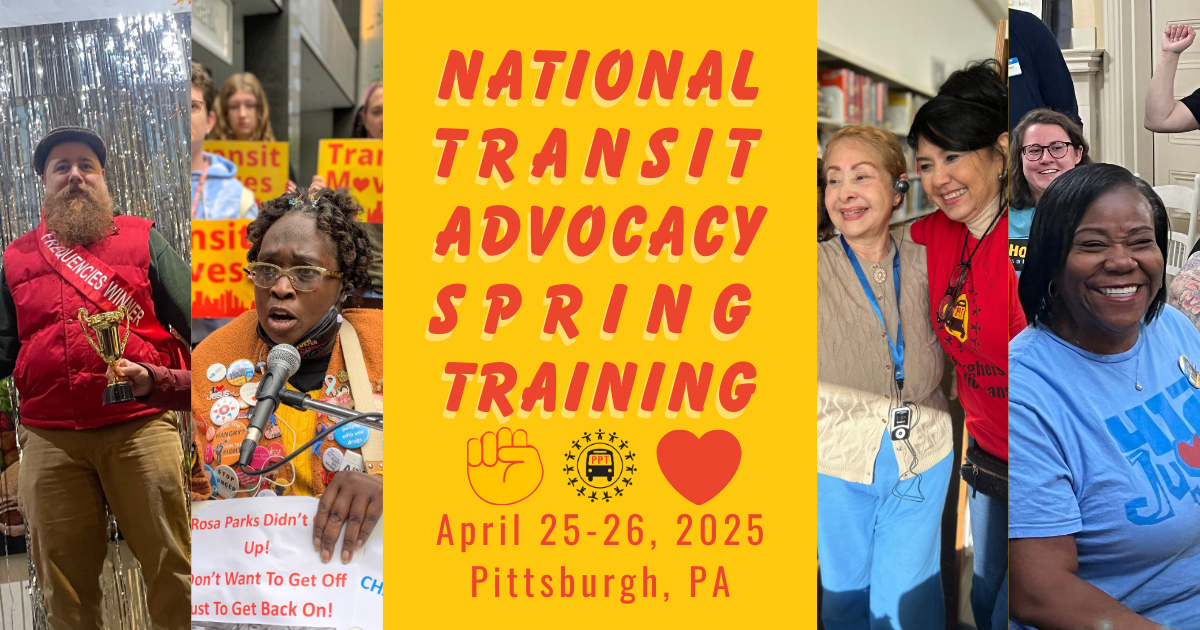 image description: Flyer for #VoteTransit Mayoral Candidate Forum, 4/9, 7-8:30p, 4836 Ellsworth Ave as photos of each of the 4 candidates & the PPT logo Pittsburghers for Public Transit’s #VoteTransit Mayoral Candidate Forum and “Transit 25/25/25...
image description: Flyer for #VoteTransit Mayoral Candidate Forum, 4/9, 7-8:30p, 4836 Ellsworth Ave as photos of each of the 4 candidates & the PPT logo Pittsburghers for Public Transit’s #VoteTransit Mayoral Candidate Forum and “Transit 25/25/25...
 [Image Description: Black text reads “Breaking: PRT proposes devastating transit service cuts. Our coalition has a better idea.” on a white background with a red star. Below, many hands hold up colorful signs that read “Transit for All PA!”,...
[Image Description: Black text reads “Breaking: PRT proposes devastating transit service cuts. Our coalition has a better idea.” on a white background with a red star. Below, many hands hold up colorful signs that read “Transit for All PA!”,...
 Image description: big red keystone shape with the text “Take Action! Stop Transit Cuts Now! in bold” BREAKING: In reaction to the budget shortfall proposed by Governor Shapiro earlier this Spring, PRT has detailed sweeping service cuts and fare increases...
Image description: big red keystone shape with the text “Take Action! Stop Transit Cuts Now! in bold” BREAKING: In reaction to the budget shortfall proposed by Governor Shapiro earlier this Spring, PRT has detailed sweeping service cuts and fare increases...
 image description: text reads “National Transit Advocacy Spring Training, April 25-25, 2025 Pittsburgh, PA” with emojies of a raised fit, PPT’s icon, and a red heart. Photos of PPT members at rallies, parties, and canvass days. Get your tickets...
image description: text reads “National Transit Advocacy Spring Training, April 25-25, 2025 Pittsburgh, PA” with emojies of a raised fit, PPT’s icon, and a red heart. Photos of PPT members at rallies, parties, and canvass days. Get your tickets...
 This Transit Worker Appreciation Day, we’re showing the love and showing up for transit funding! Whether you ride the T in the South Hills, drive the bus out of the West Mifflin Garage, cruise down the Martin Luther King Jr. Busway, or work on power and signal...
This Transit Worker Appreciation Day, we’re showing the love and showing up for transit funding! Whether you ride the T in the South Hills, drive the bus out of the West Mifflin Garage, cruise down the Martin Luther King Jr. Busway, or work on power and signal...





